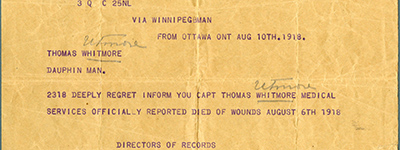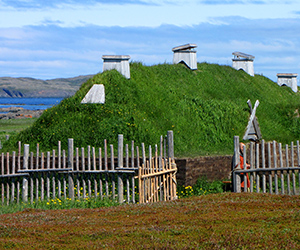CANADA HISTORY - Govenors General
George P. Vanier

General Georges-Philippe Vanier, born on April 23, 1888, in Montreal, Quebec, was one of Canada's most distinguished military and diplomatic figures, ultimately becoming the 19th Governor General of Canada in 1959. As the second Canadian to hold the office, he brought with him an extraordinary legacy of service to his country, both in times of war and peace. His life and career were marked by dedication to national unity, his commitment to public service, and his unyielding personal courage, despite severe physical challenges. Vanier’s life story is emblematic of Canada’s evolution through the 20th century, with his legacy extending far beyond his time as Governor General.
Early Life and Education
Vanier was raised in Montreal, in a devout Catholic family. His faith and sense of duty, instilled from a young age, would guide him throughout his life. He attended Loyola College (now part of Concordia University), where he excelled academically. After completing his education at Loyola, he pursued a law degree at the University of Montreal. Vanier was called to the bar in 1911 and began practicing law, but his legal career was soon interrupted by the outbreak of the First World War in 1914.
Military Career and the First World War
Vanier’s military career began in 1915 when he enlisted in the Canadian Expeditionary Force during the First World War. He joined the famed Royal 22nd Regiment, also known as the "Van Doos," a French-speaking regiment from Quebec. Vanier quickly distinguished himself as a courageous and effective leader, rising through the ranks. During the war, he fought in some of the most brutal battles of the Western Front, including the battles of the Somme, Vimy Ridge, and Passchendaele.
Vanier's bravery earned him numerous military honors, including the Military Cross for his gallantry in action and the Distinguished Service Order. However, his wartime service also came with great personal sacrifice. In 1918, during the final months of the war, he was severely wounded by artillery fire, leading to the amputation of his right leg. Despite this, Vanier’s determination and resolve were undiminished. His physical impairment never hindered his career or his relentless dedication to public service.
Diplomatic Career and the Interwar Period
After the war, Vanier shifted his focus to diplomacy, a field in which he would also leave a lasting mark. He remained active in military circles, becoming the commanding officer of the Royal 22nd Regiment from 1925 to 1928, before fully transitioning to diplomacy. His first significant diplomatic assignment came in 1928 when he was appointed Secretary to the Canadian High Commission in London. In this role, Vanier helped represent Canadian interests in the United Kingdom, further solidifying his reputation as a capable and articulate diplomat.
Vanier’s diplomatic career continued to flourish, and in 1939, he was appointed Canada’s Minister to France. His tenure in this position was interrupted by the outbreak of the Second World War, and in 1940, Vanier was witness to the fall of France to Nazi Germany. His sense of duty remained steadfast, even in the face of this national tragedy. After France fell, Vanier was instrumental in organizing the evacuation of Canadian diplomats and personnel from the country. His leadership during this difficult period was widely praised, and his experiences in Europe during the war deeply influenced his views on international diplomacy and Canada’s role on the world stage.
Second World War and Post-War Diplomatic Service
Following his service as Minister to France, Vanier returned to Canada but remained deeply involved in wartime efforts. He continued to represent Canada on the international stage, attending numerous conferences and meetings focused on post-war reconstruction and diplomacy. In 1944, after the liberation of France, Vanier was appointed Canada’s Ambassador to France, a position he held until 1953. His appointment marked the first time a Canadian had served as ambassador to France, underscoring his importance in the development of Canada’s post-war foreign relations.
During his time as ambassador, Vanier worked tirelessly to strengthen the bonds between Canada and France, focusing on cultural and economic ties. He also became an advocate for post-war reconstruction efforts and played a significant role in Canada’s contributions to rebuilding Europe. His diplomatic work was widely recognized, and he was honored by both Canadian and French governments for his contributions to international diplomacy.
In 1953, at the age of 65, Vanier retired from diplomatic service, but his commitment to public life continued. He participated in government missions, attended United Nations delegations, and engaged in private business activities, all while maintaining his close connections to the Canadian military.
Governor General of Canada (1959-1967)
In 1959, Georges-Philippe Vanier was appointed Governor General of Canada by Prime Minister John Diefenbaker, becoming the second Canadian-born individual to hold the position after Vincent Massey. Vanier’s appointment was a reflection of his long and distinguished career in public service, and it was widely seen as a tribute to his commitment to Canada’s national interests. At 71 years old, he was one of the oldest individuals to assume the office, but his energy and dedication were undiminished.
As Governor General, Vanier set out with clear objectives: to promote national unity, strengthen Canadian identity, and encourage the development of family values. These goals were deeply rooted in his personal beliefs and experiences. Vanier was a fervent advocate for bilingualism, and his fluency in both English and French made him an ideal representative of Canada’s two official languages. He traveled extensively throughout the country, covering more than 15,000 miles in his first year alone, to better understand the challenges and aspirations of Canadians from all regions.
Vanier’s emphasis on national unity became particularly important during a time of rising tensions between Quebec and the rest of Canada. The 1960s marked the beginning of the Quiet Revolution in Quebec, a period of significant social and political change that challenged the traditional relationship between Quebec and the federal government. Vanier, as a French-Canadian and a fervent believer in the strength of a united Canada, sought to bridge the growing divide. He frequently spoke about the need for mutual understanding and respect between English- and French-speaking Canadians, emphasizing the importance of preserving national unity.
In addition to his work on national unity, Vanier was a strong advocate for family values, believing that strong, united families were essential to the well-being of society. He often spoke publicly about the importance of the family unit in fostering a sense of belonging, responsibility, and civic duty. His speeches on the subject resonated with many Canadians, particularly during a time of rapid social change.
Vanier’s tenure as Governor General was marked by his unrelenting work ethic, despite facing significant health challenges. He had lost a leg during the First World War, and by the time he was appointed Governor General, his health was declining. However, he remained determined to fulfill the duties of his office with the same dedication and enthusiasm he had shown throughout his life. He continued to attend public events, meet with citizens, and travel across the country, despite the physical difficulties he faced.
National Unity and the Canadian Centennial
Vanier’s tenure as Governor General coincided with preparations for Canada’s centennial celebrations in 1967, a time of great national pride and reflection. Vanier played a central role in these celebrations, working to ensure that the centennial would be a unifying event for all Canadians. He believed that the centennial was an opportunity for Canadians to reflect on their shared history, celebrate their achievements, and look toward the future with optimism.
Unfortunately, Vanier’s declining health prevented him from fully participating in the centennial celebrations. He valiantly fought ill health in an effort to fulfill his duties, but his condition worsened. Vanier passed away on March 5, 1967, just months before the centennial celebrations were set to begin. He was the second Governor General to die in office, following Lord Tweedsmuir in 1940.
Vanier’s death was met with widespread mourning across Canada. He was remembered not only for his distinguished career in the military and diplomacy but also for his deep love of Canada and his unwavering commitment to national unity. A state funeral was held in Ottawa, followed by a memorial service at the historic Citadel in Quebec City. Vanier was buried in Quebec with full military honors, a fitting tribute to a man who had given so much to his country.
Legacy and Impact
Georges-Philippe Vanier’s legacy is one of service, dedication, and patriotism. His life was defined by his unwavering commitment to Canada, whether through his military service, his diplomatic efforts, or his time as Governor General. He remains one of Canada’s most respected and admired public figures, remembered for his contributions to national unity, his advocacy for bilingualism, and his promotion of family values.
Vanier’s legacy is also reflected in the institutions and honors that bear his name. The Vanier Cup, awarded annually to the champion of Canadian university football, was named in his honor, as was the Vanier Institute of the Family, an organization dedicated to the study and promotion of family well-being in Canada. These institutions continue to reflect Vanier’s belief in the importance of strong, united communities and the role of families in building a better society.
In the years since his death, Georges-Philippe Vanier has continued to serve as an inspiration to Canadians. His life and career exemplify the values of service, duty, and compassion, and his contributions to Canada’s national identity remain a vital part of the country’s history.
Cite Article : Reference: www.canadahistory.com/sections/documents/documents.html
Source: NA



